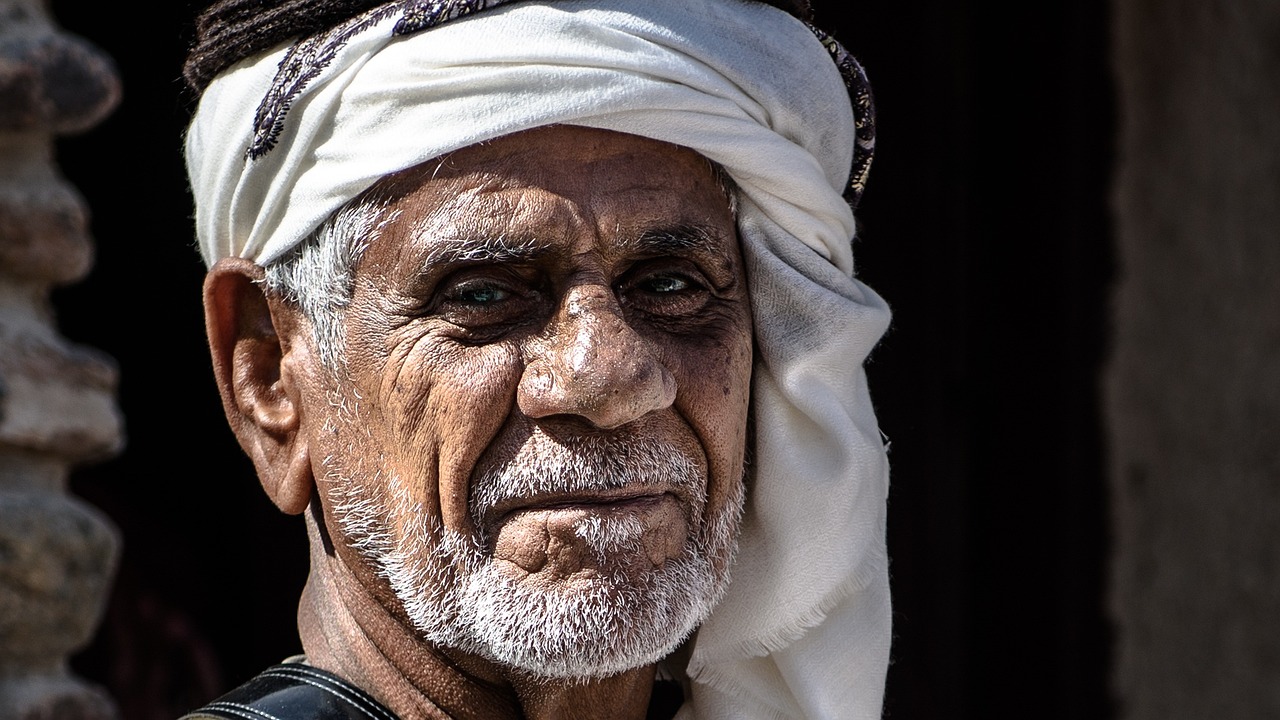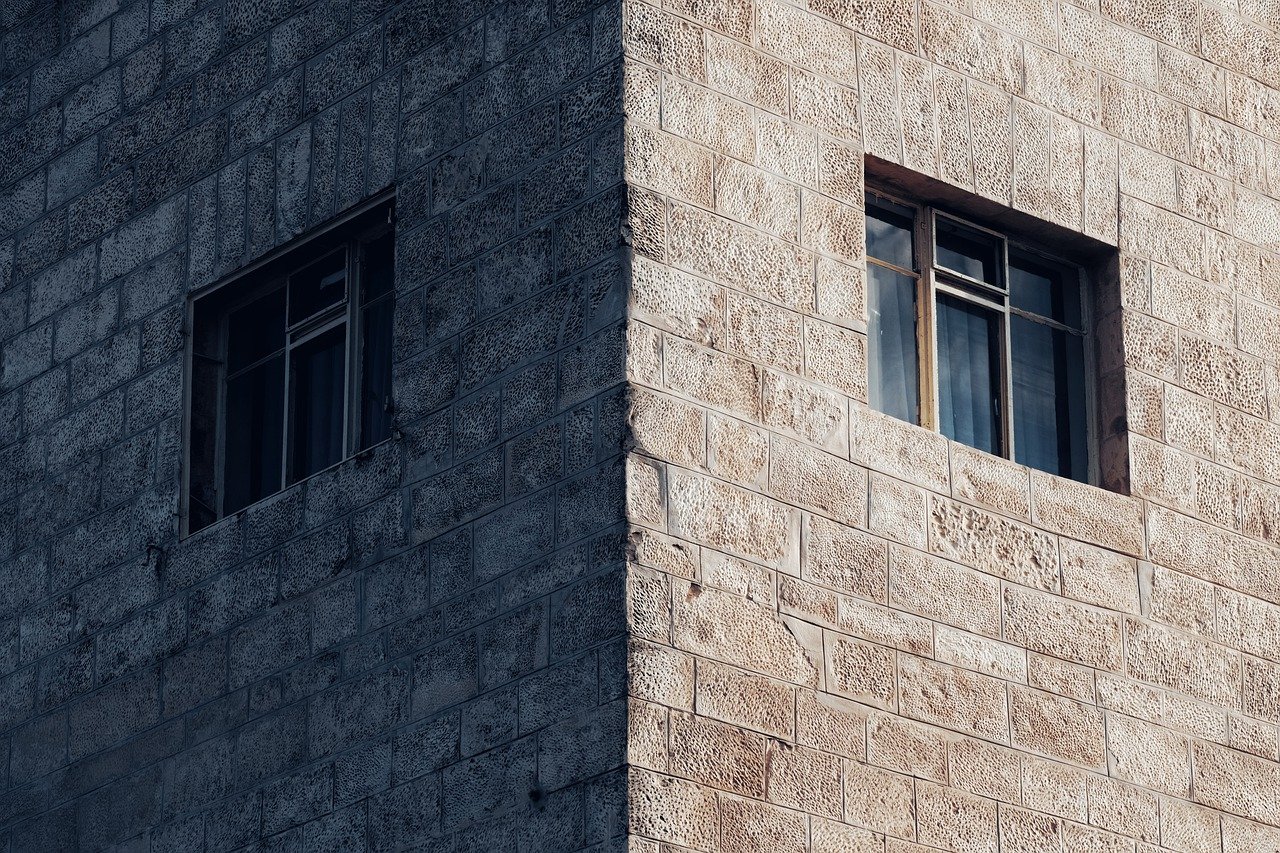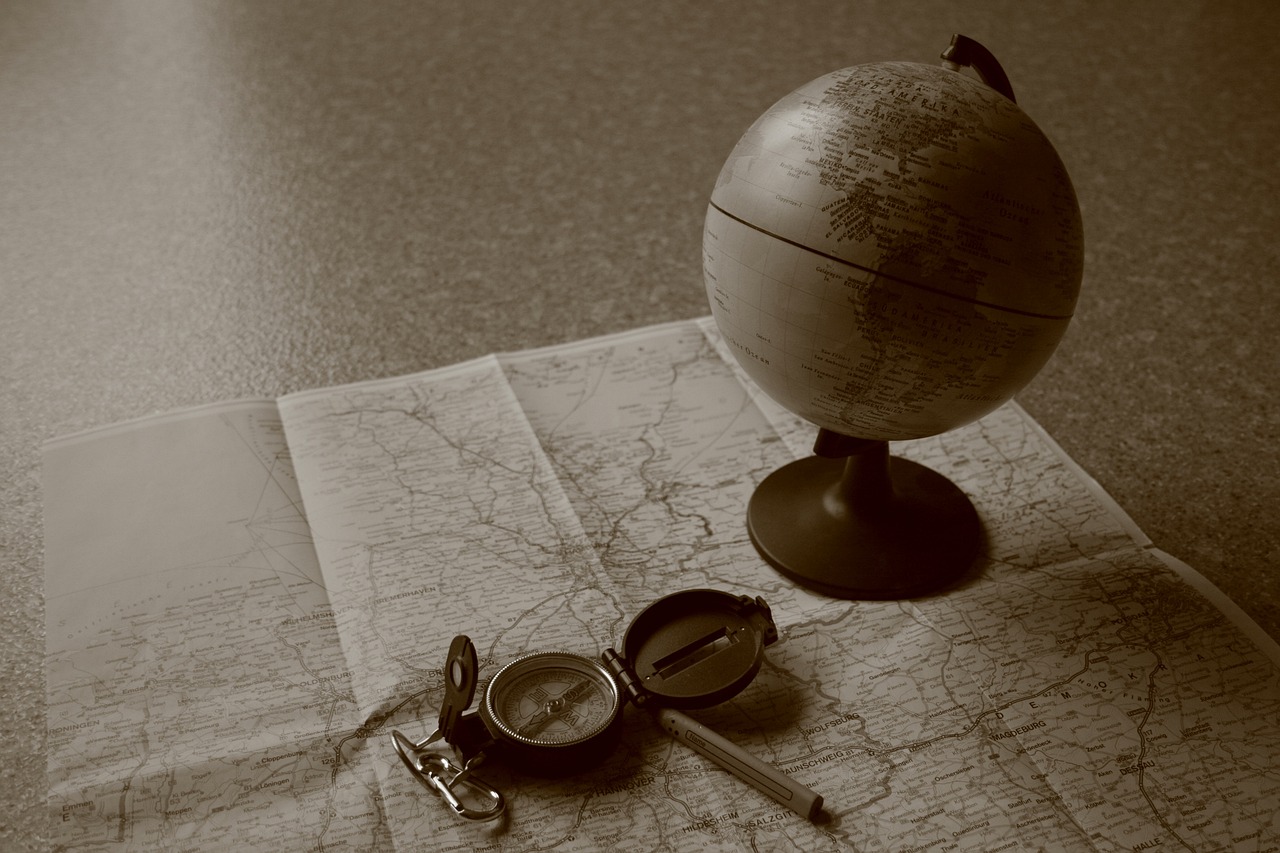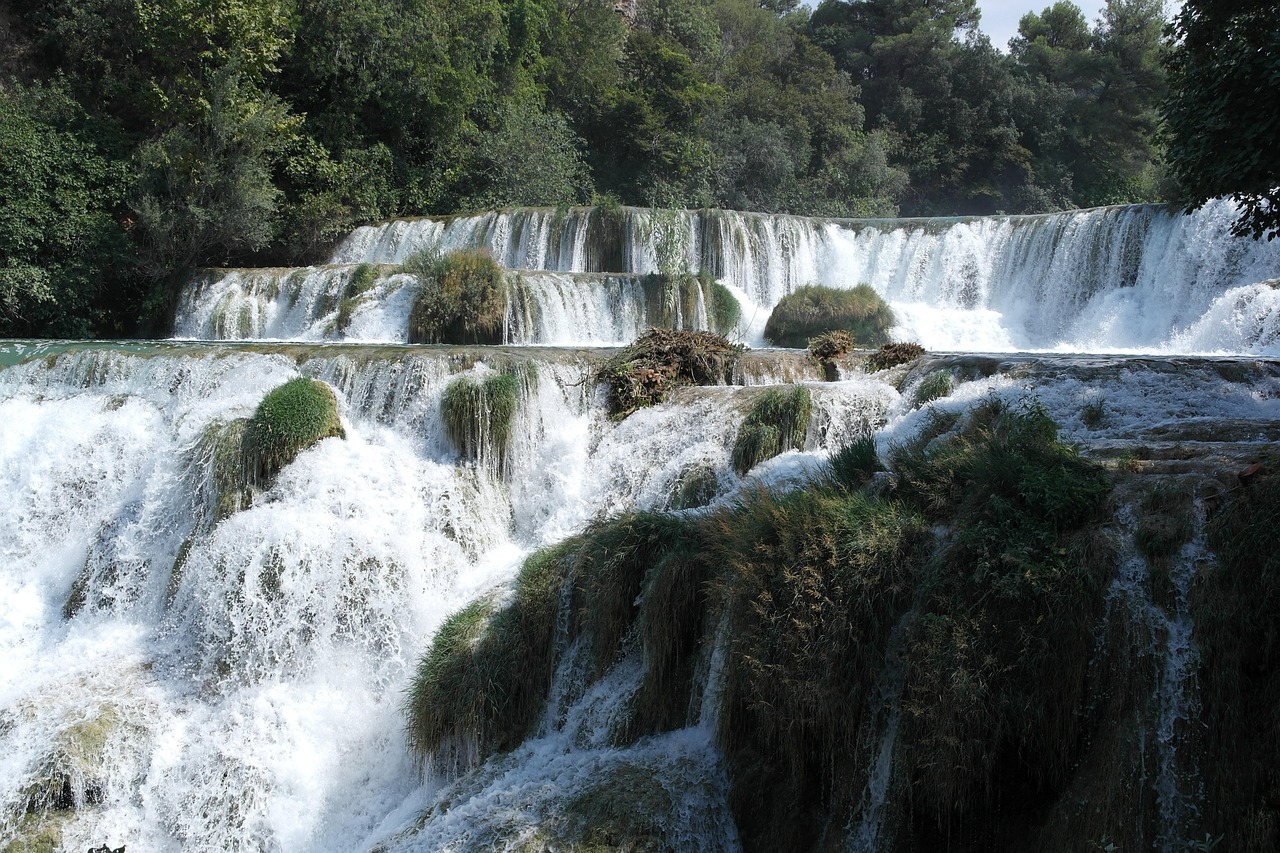Safe vacation destinations: You should avoid these places in the Middle East!
Find out which Middle East travel destinations should be avoided due to current conflicts and discover safe alternatives.

Safe vacation destinations: You should avoid these places in the Middle East!
The Middle East, a region full of cultural treasures, historic sites and breathtaking landscapes, has always attracted travelers from all over the world. From the ancient ruins of Mesopotamia to the modern metropolises of the Persian Gulf, the area offers unparalleled diversity. But recent geopolitical tensions, particularly the escalating conflict between Israel and Iran, are casting a shadow over travel safety in several countries in the region. While some destinations still appear accessible and safe, there are places that are currently considered risky due to direct or indirect involvement in the conflicts. This article highlights which travel destinations in the Middle East should currently be avoided and provides insights into the background that makes these recommendations necessary. Stay informed to adjust your travel plans wisely.
Current security situation in the Middle East

Imagine planning a trip to a region whose history is as rich as its conflicts are deep-rooted. The situation in the Middle East has deteriorated dramatically in recent months, particularly as a result of escalating tensions between Israel and Iran. This conflict, which extends far beyond the borders of the two states, affects not only political stability, but also the safety of travelers who dream of cultural encounters and historical discoveries. Recent developments, marked by military actions and mutual threats, have created an atmosphere of insecurity that affects even remote corners of the region.
Since Israel's founding in 1948, the country has been surrounded by a constant threat from a hostile environment, which makes the security situation particularly precarious due to its small geographical extent. To meet these challenges, Israel has invested heavily in its intelligence service, particularly the Mossad, which is known for its precise and often covert operations. A current highlight of this strategy is the “Rising Lion” campaign, which specifically targets Iran, which has upgraded technologically and militarily in recent years. As reports show, Iran was caught off guard by Israeli actions because the Mossad had penetrated deeply into Iranian structures. A more detailed insight into these operations is provided in an article by Cicero, which illuminates the sophistication and far-reaching consequences of these actions. The aim of such attacks was not only to destroy military infrastructure such as command centers and air defense systems, but also to destabilize the Iranian regime and curb its nuclear ambitions.
On the other hand, Iran faces a complex mix of internal and external challenges. Since the 1979 Islamic revolution, the country has had a tense relationship with Western powers and Israel, largely avoiding direct military confrontations with the latter since the 1980s – until now. Recent Israeli attacks, based on precise intelligence and reminiscent of historic operations such as the 1954 “Lavon Affair,” have exposed weaknesses in the Iranian system. Economic and political problems are increasing instability, while the loss of regional allies further weakens Tehran's position. This means an increased risk for travelers, as the unrest in the country can lead to unforeseeable conflicts at any time.
The impact of these tensions extends far beyond military conflicts and affects daily life and international relations. A clear example is the cancellation of the German-Israeli Literature Days in Berlin, which were actually supposed to take place in June. Due to the escalation in the Middle East, especially since mid-June, and the associated travel restrictions for Israeli participants, the event was canceled South German newspaper reported. Such events illustrate how profoundly the conflict limits cultural and personal exchange opportunities and how quickly the situation for travelers can worsen.
For those considering the Middle East as a travel destination, it is crucial to understand the dynamics of this dispute. The uncertainty caused by missile attacks and political instability not only affects the countries directly involved, but also spills over into neighboring regions. Flight connections can be canceled at short notice, borders closed and security warnings issued, which can turn even well-planned trips into chaos. The question of which places are particularly affected is therefore becoming increasingly urgent if one wants to weigh up the risks and make informed decisions.
Affected countries and regions

As news of missile attacks and military escalations dominate the headlines, it is clear that certain corners of the Middle East are currently less than welcoming to travelers. The direct conflicts between Israel and Iran have not only shaken the political landscape, but have also massively affected security in these countries. A closer look at the affected areas reveals why even adventurous globetrotters should rethink their plans when it comes to these destinations.
There has been a tense atmosphere in Israel since the recent attacks, affecting daily life and tourism alike. On the seventh day of the conflict with Iran, enemy missiles hit a hospital in Beersheba in the south of the country, injuring 40 people and causing significant damage. Iran claimed that the actual target was a nearby military base, but the incident shows how unpredictable the situation on the ground is. According to reports, as she at Yahoo News Prime Minister Benjamin Netanyahu has announced that Iran will pay a heavy price for such actions, while the Israeli army is said to have already destroyed over half of Iran's rocket launchers. For travelers, this not only means the risk of getting into immediate danger zones, but also massive restrictions on mobility. The US Embassy in Jerusalem has raised its travel advisory to the highest level, Level 4, and is preparing evacuations for American citizens.
The situation for foreigners in Israel is also illustrated by personal reports. Many U.S. citizens, including students and participants in programs like Birthright Israel, had to hastily organize their departure plans. Some have been evacuated to Cyprus on cruise ships, others are seeking alternative routes via Jordan, as another article at Yahoo News describes. Families and individuals report constant alarms and being forced to seek refuge in shelters, while at least 24 deaths have been reported from Iranian missile attacks in Israel. Such circumstances make it clear that even tourist hotspots such as Tel Aviv or Jerusalem cannot currently offer safe places to retreat.
On the other side of the conflict is Iran, where the situation for travelers also remains alarming. The Israeli attacks not only hit military targets such as the decommissioned nuclear facility in Arak or the uranium enrichment facility in Natanz, but also exacerbated the already tense domestic political situation. Iranian police have reportedly arrested 24 people for suspected spying for Israel, while a total of 223 people have been detained since the attacks began. The high death toll – at least 452 since the start of the Israeli offensive – underlines the intensity of the conflict. Visitors face not only the risk of being caught up in military action, but also the risk of being stranded in a country suffering from economic pressure and social unrest.
The threats and counter-threats between the two countries leave little room for optimism when it comes to the safety of travelers. As Israel emphasizes its determination to combat Iran's nuclear ambitions and ballistic capabilities, Iran has responded with over 100 drone strikes on Israeli territory. International actors such as the UN human rights chief Volker Turk are calling for restraint, but the escalation appears to be unbroken. For tourists, this means that even remote regions in both countries are not immune to sudden security incidents, whether through direct attacks or the impact of travel restrictions and closed borders.
The unpredictability of the situation is further reinforced by the international reactions. As the US signals its support for Israel while making evacuation plans for its citizens, pro-Iranian groups in the region are warning of interference from outside powers. These complex dynamics show that the conflicts do not remain isolated but could also affect neighboring countries. Which other regions are affected and how the situation affects other travel destinations remains a key question for anyone who wants to include the Middle East in their plans.
Risks for travelers

Do you dream of traveling through historic cities and stunning desert landscapes, only to find that the reality is one of conflict and uncertainty? There are dangers lurking in the Middle East, particularly in the areas affected by the conflict between Israel and Iran, which pose challenges for even experienced travelers. From sudden military escalations to increased risk of terrorist activity, the risks are diverse and require careful consideration before packing your suitcase.
Direct military conflict represents one of the most immediate threats to anyone traveling to the affected regions. Missile attacks and drone offensives, such as those that have taken place between Israel and Iran in recent weeks, can strike without warning. In Israel, civilian facilities such as hospitals were hit, while in Iran, military targets and infrastructure were destroyed. Such incidents show how quickly supposedly safe zones can turn into dangerous areas. For tourists, this not only means the risk of physical injury, but also the possibility of being stranded in a crisis zone where evacuations are difficult and time-consuming. Flight connections can be canceled at any time, and border crossings often close without notice.
In addition to the visible conflicts, there is an underlying but equally serious threat of terrorist activity, which is further fueled by current tensions. As the German Foreign Office emphasizes in its security advisory, the global risk of attacks and kidnappings remains, particularly in regions affected by geopolitical crises. Organizations such as Al Qaeda and the Islamic State use conflicts such as those in the Middle East to increase their mobilization, which increases the risk of attacks. Possible destinations include places with high symbolic value such as sights, government buildings or tourist centers, but also transport hubs such as airports and train stations. Further details about these risks can be found on the website Foreign Office, which publishes regularly updated warnings and recommendations.
Although the risk of terrorist attacks varies by country, the likelihood is significantly increased in the currently affected areas of the Middle East, particularly in countries with weak security structures or a history of repeated attacks. For travelers, this means that even everyday activities such as visiting a market or a religious site can become risky. Hotels and other tourist facilities, often considered safe havens, are also potential targets. In addition, larger gatherings of people – be it at cultural events or on public transport – could attract the attention of extremist groups.
Another aspect that makes travel planning difficult is the unpredictability of the situation. Geopolitical crises such as the current conflict between Israel and Iran can result in sudden escalations that affect not only military but also civilian areas. The Foreign Office points out that German citizens or institutions abroad could also be targeted by terrorist violence, even if there are currently no concrete indications of immediate threats. This uncertainty requires travelers to exercise a high degree of caution and be willing to constantly keep themselves informed about developments on site, as is also the case in reports such as those of Mercury is recommended.
Aside from the physical dangers, logistical and psychological stress also play a role. Constant air alerts, the need to seek shelter, and uncertainty about the next escalation can make a trip a stressful experience. Travelers should be aware that even if the risk of being directly involved in an attack or attack appears relatively low compared to other dangers such as accidents or illness, the impact on well-being and travel planning is significant. The recommendation to monitor local and international media and report suspicious incidents to authorities underscores the need for ongoing security awareness.
The complexity of these risks shows how important it is to be thoroughly informed before traveling and to keep an eye on developments. What alternatives exist for travelers who still want to experience the Middle East without exposing themselves to these dangers is a topic that deserves equally careful consideration.
Recommended travel destinations outside of the conflict

Do you long for the magic of the Middle East without the risks of current conflicts? Fortunately, there are destinations in this fascinating region that are far removed from the tensions between Israel and Iran but still offer a rich cultural experience. These places allow you to immerse yourself in the history, architecture and hospitality of the Orient while keeping safety in mind. Let's explore some of these alternatives that can satisfy your travel cravings without taking unnecessary risks.
One of the most attractive options is Qatar, a small but culturally rich country on the Persian Gulf that stands out for its impressive modernity and deep-rooted traditions. The capital, Doha, boasts the Museum of Islamic Art, which houses an impressive collection of artifacts from the Islamic world, as well as the lively Souq Waqif, where spices, crafts and local specialties await visitors. In recent years, Qatar has established itself as a safe travel destination, far from direct conflict zones, and offers a stable infrastructure for tourists. Although some airlines such as Qatar Airways have suspended services to Iran and Iraq, flights to Doha remain largely unaffected, recent reports show.
Another recommended destination is Bahrain, an island nation often referred to as the Pearl of the Gulf. Here, history and modernity merge in a unique way: the ancient site of Qal'at al-Bahrain, a UNESCO World Heritage Site, tells of millennia of civilization, while modern Manama beckons with luxurious shopping centers and a vibrant art scene. Bahrain is geographically and politically outside the immediate conflict lines and is not classified as a high-risk area in the current travel advice from the Foreign Office. This makes the country a reassuring choice for travelers who want to experience the Middle East without the worry of sudden escalations.
Anyone looking for desert romance and impressive nature should take a look at Oman, a country known for its breathtaking landscapes and peaceful atmosphere. The capital, Muscat, boasts an architectural masterpiece with the Sultan Qaboos Grand Mosque, while the desert regions and Arabian Sea coasts attract adventure seekers. Oman has deliberately stayed out of regional conflicts and enjoys a reputation as one of the safest countries in the region. Nevertheless, the Foreign Office recommends that the situation be checked regularly, as in the current information daily news can be read. For travelers this means that with a little caution they can enjoy an authentic experience far away from the crisis areas.
The United Arab Emirates, particularly Dubai and Abu Dhabi, also offer a safe haven for travelers seeking the splendor of the Middle East. Dubai impresses with the Burj Khalifa, the tallest building in the world, and a vibrant cultural scene, while Abu Dhabi sets cultural highlights with the Sheikh Zayed Mosque and the Louvre Abu Dhabi. Although the Foreign Office has issued updated travel advice for the Emirates, they are currently not considered to be directly affected by the conflicts between Israel and Iran. Airlines such as Emirates and Etihad Airways are continuing their services to Dubai largely as scheduled, making accessibility easier. However, it is recommended that you contact tour operators in advance and take out comprehensive travel insurance that also covers political risks.
For those who prefer a mix of history and nature, Saudi Arabia could be a surprising alternative, particularly the Al-Ula region. Often referred to as the “Petra of Saudi Arabia,” this historic site features impressive rock formations and ancient Nabataean tombs that are far less crowded than comparable sites in the region. Saudi Arabia has opened its doors to tourism in recent years and places great importance on the safety of visitors. Current travel advice suggests the country is not directly involved in the conflicts, making it a viable option for those interested in culture.
These destinations show that the Middle East has much more to offer than the areas overshadowed by conflict. With proper planning and attention to current developments, travelers can discover the beauty and diversity of the region without exposing themselves to unnecessary danger. How best to prepare for such a trip and what is important is an aspect that deserves just as much attention.
Travel advice and warnings

Before you pack your travel bag and head to the Middle East, it's worth taking a look at the official advisories and warnings issued by government bodies and international organizations. These sources provide valuable guidance for assessing the risks in the currently tense region, particularly in light of the conflict between Israel and Iran. By considering such information, travelers can make informed decisions and prioritize their safety while adapting their plans to the dynamic situation.
The German Foreign Office has published comprehensive travel advice that specifically addresses the escalating situation in the Middle East. For Israel, non-essential travel is strongly discouraged due to the “extremely tense” security situation and the declared state of emergency. German citizens are also recommended to leave Iran as the danger to life and limb is classified as acute. Travel warnings or partial travel warnings are also in effect for the Palestinian Territories and Lebanon, while countries such as the United Arab Emirates, Saudi Arabia, Bahrain, Qatar, Kuwait, Oman and Jordan have updated safety advisories urging caution. The Federal Foreign Office's Crisis Response Center remains active, and travelers are asked to register on the ELEFAND crisis preparedness list so that they can be contacted quickly in an emergency.
Similar recommendations come from Switzerland's Federal Department of Foreign Affairs (EDA), which provides detailed travel advice focusing on security-related aspects such as political instability and crime. For regions at risk in the Middle East, two levels of advice are advised against: on the one hand, tourist and non-urgent travel, although urgent travel is possible with increased caution, and, on the other hand, against any travel if it is considered too risky. In exceptional situations, Swiss citizens may even be recommended to leave the country. The FDFA's advice, which is regularly adapted to the current security situation, is based on trustworthy sources and can be found online on the department's website at EDA travel advice can be viewed. Travelers are also encouraged to follow local authority instructions and stay informed via international media.
The Austrian Federal Ministry for European and International Affairs (BMEIA) also offers extensive information for travelers considering the Middle East. The citizen service provides detailed travel advice and travel warnings that answer questions about the safety of holiday destinations, entry requirements and emergency contacts. A global safety advisory is being highlighted for the Middle East, calling for increased caution. In the event of an emergency, a 24-hour emergency number (+43 1 90115 4411) is available and further information can be accessed via the smartphone app at www.auslandsservice.at. These resources are particularly helpful in getting quick support in the event of loss of passport or sudden illness.
The recommendations from these official bodies make it clear that the decision to travel ultimately rests with the travelers themselves, but can have significant consequences. Both the FDFA and the Foreign Office point out that travel insurance companies generally do not cover any costs if travel warnings are ignored. This underlines the importance of obtaining thorough information in advance and taking the information seriously. For countries such as Israel and Iran, where the security situation is considered particularly unstable, it is often not only advised against tourist trips, but also recommended to leave immediately in order to minimize the risk.
In addition to the national authorities, international organizations and local tourism offices also offer valuable insights into the current situation. Travelers are encouraged to seek information through various channels, including local and international media coverage, to obtain a comprehensive picture of the situation. The dynamic nature of the conflicts in the Middle East requires constant updating of information as travel advisories can change at short notice. For those who still wish to travel to the region, it is advisable to check with tour operators about the feasibility of travel and consider flexible cancellation or rebooking options.
Taking this official advice into account is a crucial step in making a trip to the Middle East safe or, if necessary, replanning it. What additional practical measures travelers can take to ensure their safety is another important aspect that deserves attention.
Cultural and historical significance of the affected regions

Imagine wandering the narrow streets of an ancient city, surrounded by stories engraved on every stone - but the reality of the conflict between Israel and Iran forces us to put such dreams on hold for now. The Middle East holds countless cultural treasures and historical sites that usually attract travelers from all over the world. However, due to the current security situation, many of these impressive sites, which bear witness to past civilizations and cultural achievements, must currently be avoided. A look at these hidden gems reveals what we are momentarily missing and underscores the urgency of prioritizing safety over the desire for discovery.
In Israel, sites like the Old City of Jerusalem, a UNESCO World Heritage Site, typically beckon with their unparalleled mix of religious and historical significance. The Western Wall, the Temple Mount and the Church of the Holy Sepulchre are places where history comes to life, but the current escalation with rocket attacks and military actions makes visiting them impossible. Likewise, the ancient ruins of Masada, a fortress with breathtaking views of the Dead Sea, and the Roman remains of Caesarea are currently inaccessible to tourists as even remote areas are affected by insecurity. These sites, known for their universal cultural value, must for now be admired from a distance due to the risks associated with traveling to conflict zones.
On the other side of the conflict, Iran offers a wealth of historical wonders that also remain unattainable under current circumstances. Persepolis, another UNESCO World Heritage Site, bears witness to the splendor of the ancient Persian Empire with its monumental columns and ornate reliefs. This site near Shiraz is a window into a time when kings ruled over vast empires, but recent Israeli attacks and the unstable security situation make traveling there an unacceptable risk. The historic city of Isfahan, known for the impressive Naqsh-e Jahan Square and the Sheikh Lotfollah Mosque, also remains inaccessible to visitors as the country's political tensions and economic challenges cannot ensure security.
The regions directly or indirectly affected by the conflict, such as parts of the Palestinian Territories, also contain cultural treasures that should not be visited at this time. Bethlehem, with the Church of the Nativity at the center of Christian pilgrimages, is a place of deep spiritual value, but its proximity to conflict zones and constant uncertainty make it risky to visit. The situation is similar with Jericho, one of the oldest cities in the world, whose archaeological sites offer fascinating insights into the early history of humanity. Such places, which are often considered prominent points of cultural and historical significance, such as on platforms such as Tourist Information are unfortunately not currently an option for travelers who need to prioritize their safety.
In addition to these well-known sites, there are countless smaller cultural assets and historical markets that reflect the daily life and traditions of the region. In Israel, the lively bazaars of Jerusalem or Tel Aviv are usually places to discover local crafts and culinary specialties. In Iran, cities like Tehran and Shiraz offer museums and historic districts that tell stories spanning thousands of years. But the risk of sudden escalations and associated travel restrictions mean that even these less prominent but equally valuable experiences are currently inaccessible. The cultural diversity that can be experienced through such markets and events must wait for better times for now.
The inability to visit these sites is a painful loss for all who long for cultural exchange and historical understanding. Many of these places are not only tourist attractions, but also symbols of humanity's shared history that transcends conflicts and borders. However, safety remains the top priority and the hope is that these treasures will be safely accessible again in the near future. Until then, it's worth considering ways to experience the culture and history of this region in other ways without exposing yourself to the current dangers.
Future outlook

As we look toward an uncertain future, the conflict between Israel and Iran is like a storm whose path is difficult to predict but whose impact on travel in the Middle East could be profound. The dynamics of this dispute, characterized by military escalations and political tensions, leave room for speculation about how the situation may develop and what consequences this will have for future travel plans. Looking at possible scenarios and their impact on the region helps to navigate the uncertainties and maintain hope for better times for tourism.
Recent developments show that conflicts like this often develop a dynamic of their own, driven by misunderstandings and mutual threats. Conflict escalation models, such as the phase model developed by Friedrich Glasl, illustrate that tensions can quickly move from verbal confrontations to physical actions and ultimately to limited destructive strikes. The current situation between Israel and Iran appears to be at an advanced stage where threats and military actions are already a reality. According to Glasl's model, that on The project managers As described in detail, without external intervention there could be a risk of further escalation up to a total confrontation in which both sides accept significant losses. For travelers, this would mean that not only Israel and Iran, but also neighboring regions could continue to be considered unsafe.
One possible scenario is a continuation of the current stalemate, in which both sides continue to engage in military action without either side gaining a decisive advantage. In this case, sporadic missile attacks and drone offensives could become the norm, maintaining insecurity in the region. Flights to Israel and Iran would likely remain restricted, and even nearby countries could be affected by occasional security incidents. This would represent a lasting deterrent for tourism, as even well-planned trips would be at risk from sudden escalations. The formation of coalitions and the involvement of third parties, as described in conflict models, could also draw neighboring states more deeply into the dispute and spread uncertainty to a broader geographical level.
Another conceivable development would be de-escalation through international mediation or diplomatic efforts. If external actors such as the United Nations or major powers such as the USA and Russia intervene successfully, a phase of relative calm could occur, as described in conflict phase models as a temporary détente. However, this would not automatically mean that travel to the region would immediately be safe again. The hardening of enemy images and the loss of trust, as highlighted in the models of Glasl and other experts, could continue to fuel tensions beneath the surface. For tourists, this could allow a gradual return to certain destinations, but only under strict security precautions and with a constant willingness to adapt plans at short notice.
In the worst case, the conflict could lead to a phase of total confrontation in which both sides are prepared to accept significant sacrifices in order to weaken the opponent. Such a scenario, described in conflict models as “together into the abyss,” would have devastating consequences not only for Israel and Iran, but for the entire region. Infrastructure, including airports and tourist facilities, could suffer massive damage and the humanitarian situation would deteriorate dramatically. For tourism, this would mean a complete closure of affected areas, possibly for years, while even countries on the edge of the conflict would see a decline in visitor numbers as perceptions of the region as unsafe dominate.
The emotional and economic strain associated with a prolonged or intensified dispute could also have a long-term impact on travelers' willingness to consider the Middle East as a destination. Even if a solution is found, the scars of the conflict - whether through destroyed infrastructure or changed political landscapes - could affect the region's attractiveness for tourism. It remains to be seen whether and how quickly the situation could stabilize and what role international actors will play in de-escalation. Until then, it is important for anyone who dreams of the wonders of the Middle East to closely monitor developments and find alternative ways to experience the culture and history of this region.
Travel preparations and safety tips

With a backpack on your shoulders and a head full of adventure - the Middle East is calling, but the current situation requires special caution. Given the conflict between Israel and Iran, it is essential for travelers to be well prepared, whether for a trip to safer parts of the region or for future plans when the situation eases. Practical measures and thoughtful preparation can mean the difference between a smooth experience and unexpected difficulties. Here are some solid tips to make your trip as safe and stress-free as possible.
First of all, it is important to find out thoroughly about the current security situation before even thinking about traveling. The Foreign Office and other official bodies regularly update their travel advice, particularly for countries such as Israel and Iran, where non-essential travel is currently discouraged. For other countries in the region, such as the United Arab Emirates, Saudi Arabia or Oman, which are considered safer, you should still check the specific instructions, such as those on daily news be reported. Register on crisis preparedness lists like ELEFAND so that you can be contacted quickly in an emergency, and keep important contact numbers for embassies or consulates at hand. These precautionary measures are particularly important as the situation in the region can change at short notice.
Plan your trip with maximum flexibility to be able to react to unforeseen developments. Choose tour operators or airlines that offer free rebookings or cancellations if the security situation deteriorates. Comprehensive travel insurance that also covers political risks is a must, as many standard insurance policies do not apply if travel warnings are ignored. Also check the entry requirements in advance and ensure that all documents such as passport and visa are valid. Copies of important documents, both digital and paper, can be life-saving in the event of loss.
If you are already in the region or are planning a trip to safer areas such as Qatar or Bahrain, be sure to stay informed about local news and international media. Avoid large gatherings and follow the instructions of local authorities, especially in countries that may be indirectly affected by the tensions. Carry important contact information and emergency numbers with you, and share your location and travel plans with family or friends. A simple measure such as checking in daily with someone you trust can save valuable time in an emergency.
Health preparation should also not be underestimated, as medical care can be limited in crisis areas. Make sure your vaccinations are up to date and pack a well-stocked first aid kit with necessary medications. Find out in advance about local medical care, especially in countries you plan to visit, and write down addresses of hospitals or clinics. Like on platforms like Let's go recommended, it makes sense to collect such information before departure in order to be able to act quickly in an emergency. Also remember to carry enough cash in an internationally accepted currency, as banking services may be affected in uncertain times.
For those planning a trip to the Middle East in the future, patience is a virtue. Monitor geopolitical developments and wait for the situation to stabilize before making any bookings. Use this time to learn about the culture and history of the region so that you can later embark on your trip with a deeper understanding. Consider speaking to tour operators who have experience in the area and can provide up-to-date information about safe destinations. A well-thought-out packing list tailored to the specific needs of the region and checking airline baggage policies are further steps that will help avoid unpleasant surprises.
Safety and well-being should always be your top priority, whether you are already traveling or considering a trip to the Middle East. With proper preparation and a keen eye on developments, you can minimize risks and still experience the beauty of this fascinating region - whether now in safe areas or at a later date when tensions ease. How to strike that balance between adventurousness and caution remains an individual decision that requires careful consideration.
Sources
- https://www.cicero.de/aussenpolitik/naher-osten-wie-israel-den-iran-uberrumpelte
- https://www.sueddeutsche.de/kultur/krieg-im-nahen-osten-deutsch-israelische-literaturtage-abgesagt-dpa.urn-newsml-dpa-com-20090101-250616-930-678339
- https://www.yahoo.com/news/iran-israel-war-latest-developments-072812209.html?fr=sycsrp_catchall
- https://www.yahoo.com/news/american-students-tour-groups-waiting-010411455.html?fr=sycsrp_catchall
- https://www.auswaertiges-amt.de/de/reiseundsicherheit/10-2-8reisewarnungen
- https://www.merkur.de/deutschland/laender-auswaertiges-amt-aktuelle-reisewarnungen-liste-zeigt-die-weltweit-betroffenen-zr-93790479.html
- https://www.infranken.de/ratgeber/urlaub-reisen/aktuelle-reisewarnungen-fuer-den-nahen-osten-diese-laender-solltest-du-meiden-art-6229095
- https://www.tagesschau.de/inland/innenpolitik/auswaertiges-amt-reisewarnung-nahost-100.html
- https://www.eda.admin.ch/eda/de/home/vertretungen-und-reisehinweise/laenderunabhaengigereiseinformationen/reisehinweise-kurzerklaert.html
- https://www.bmeia.gv.at/reise-services/reiseinformation/
- https://www.tourist-information.info/sehens-und-wissenswertes/sehenswuerdigkeiten/
- https://reisen-auf-der-welt.de/reiseziele/die-kulturellen-schaetze-entdecken/
- https://www.weka.ch/themen/fuehrung-kompetenzen/kommunikation-und-auftritt/konfliktmanagement/article/konfliktentwicklung-die-dynamik-von-konflikten/
- https://dieprojektmanager.com/konflikteskalation-nach-friedrich-glasl/
- https://www.nix-wie-weg.de/inspiration/die-ultimative-urlaubscheckliste-fuer-die-reisevorbereitung/

 Suche
Suche
 Mein Konto
Mein Konto